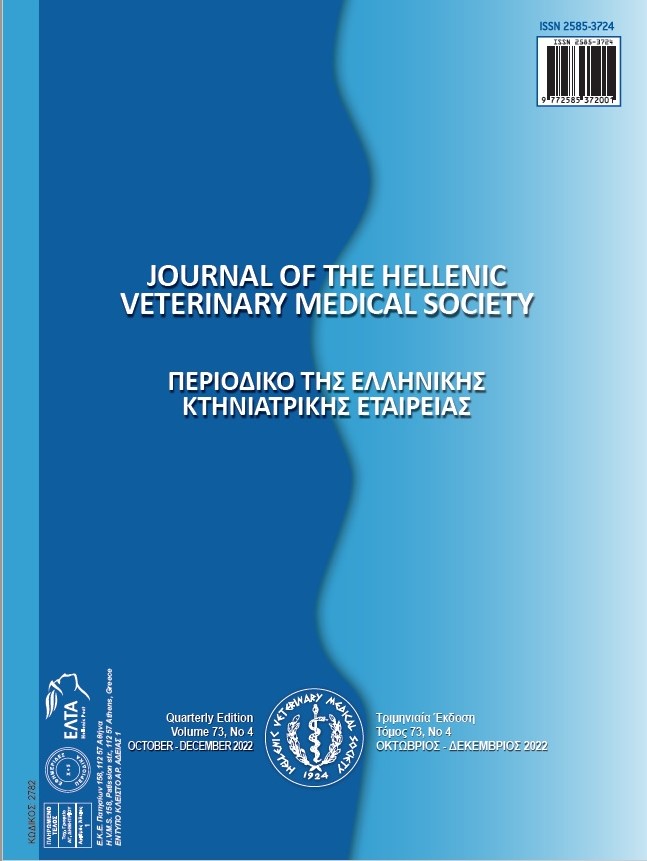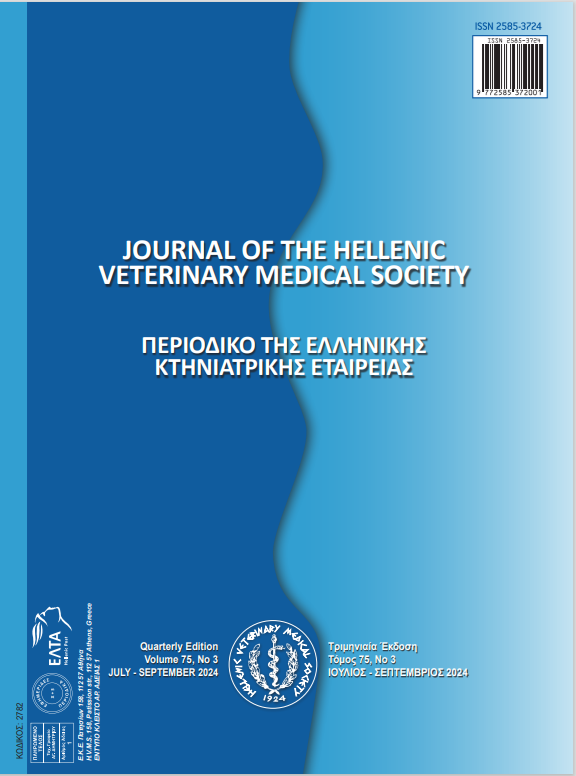Bacterial and Parasitic Co-Infection in Carassius gibelio Bloch, 1782 Caught in the Onaç Reservoir, Türkiye

Abstract
This study investigates the bacterial and parasitic co-infection of Prussian carp (Carassius gibelio Bloch, 1782). C. gibelio belongs to the Cyprinidae family, an alien species in the freshwater systems of Turkey. Alien species can cause the emergence of new diseases in native species that constitute the ichthyofauna. C. gibelio specimens were examined from Onaç Reservoir in Burdur, Turkey. Symptoms were skin lesions, exophthalmos, darkening in color, rupture, and hemorrhage in the radius of the caudal fin, and loss of scale of the fish. Gyrodactylus sprostonae and Trichodina sp. were also observed. Additionally, Shewanella putrefaciens and Aeromonas sobria were isolated from the fish specimens. Erosive and ulcerative lesions were frequently seen during the histopathological investigation. Both isolates were resistant to penicillin, oxacillin, lincomycin, and ampicillin. In conclusion, the presence of various bacterial strains, a ciliate parasite, and a monogenic parasite was determined in C. gibelio. We report that the aforementioned fish pathogens created a co-infection in the region. In the future, more study is needed to a clearer awareness of the silver carp dealing with co-infection and the details of the interaction between bacterial and parasitic diseases. This will be beneficial for fish disease management.
Article Details
- Come citare
-
Yıldırım, P., Kan, Ş, Güçlü, S., Özmen, Ö, Özdamar, A., Bahrioğlu, E., & Kubilay, A. (2024). Bacterial and Parasitic Co-Infection in Carassius gibelio Bloch, 1782 Caught in the Onaç Reservoir, Türkiye. Journal of the Hellenic Veterinary Medical Society, 75(2). https://doi.org/10.12681/jhvms.34180
- Fascicolo
- V. 75 N. 2 (2024)
- Sezione
- Research Articles

Questo lavoro è fornito con la licenza Creative Commons Attribuzione - Non commerciale 4.0 Internazionale.
Authors who publish with this journal agree to the following terms:
· Authors retain copyright and grant the journal right of first publication with the work simultaneously licensed under a Creative Commons Attribution Non-Commercial License that allows others to share the work with an acknowledgement of the work's authorship and initial publication in this journal.
· Authors are able to enter into separate, additional contractual arrangements for the non-exclusive distribution of the journal's published version of the work (e.g. post it to an institutional repository or publish it in a book), with an acknowledgement of its initial publication in this journal.
· Authors are permitted and encouraged to post their work online (preferably in institutional repositories or on their website) prior to and during the submission process, as it can lead to productive exchanges, as well as earlier and greater citation of published work.





